Tirana, Albania’s capital, has long been shaped by its communist past under Enver Hoxha’s iron-fisted rule. The city’s architecture, infrastructure, and culture transformed to reflect the regime’s ideology. Today, Tirana‘s transition invites visitors to explore its complex history, from the authoritarian control of the communist era to the resilience and adaptability of its people in the post-communist age. Delving into Tirana’s past reveals a story of transformation, where iconic sites like Skanderbeg Square and the Pyramid of Tirana stand as reminders of a turbulent era, and Bunkart 2 Museum offers a glimpse into the daily lives of those who lived under communist rule.
Key Points
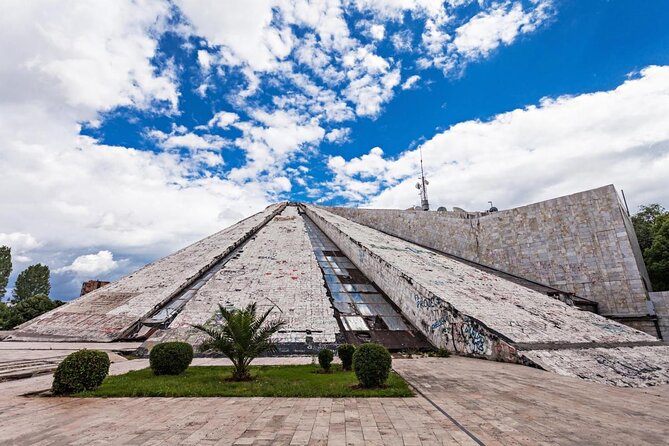
-
Tirana endured nearly half a century of communist rule under Enver Hoxha’s authoritarian regime, transforming the city’s architecture, infrastructure, and cultural landscape.
-
Hoxha’s cult of personality and isolationist policies led to economic stagnation and social repression, with the state’s omnipresent surveillance and control over all aspects of life.
-
Iconic sites like Skanderbeg Square and the Pyramid of Tirana stand as reminders of Tirana’s complex history, inviting visitors to explore the city’s transition from a communist past to a vibrant, forward-looking capital.
-
The Bunkart 2 Museum offers a powerful display of Albania’s transition from a closed-off, authoritarian state to a democratic society, showcasing the impact of Hoxha’s regime on everyday Albanians.
-
Through walking tours, visitors can enjoy the everyday realities of life under Enver Hoxha’s rule, gaining a deeper appreciation for the resilience and adaptability demonstrated by the country’s citizens.
Tirana’s Communist Past
Tirana, the capital of Albania, endured nearly half a century of communist rule under the authoritarian regime of Enver Hoxha.
From 1944 to 1991, Albania was a one-party state with a totalitarian government that controlled every aspect of life. Hoxha’s cult of personality and isolationist policies plunged the country into economic stagnation and social repression.
The city’s architecture, infrastructure, and cultural landscape were transformed to reflect the communist ideology. Public spaces like Skanderbeg Square became stages for mass rallies and propaganda displays.
The Pyramid of Tirana, once a museum dedicated to Hoxha, now stands as a relic of Albania’s communist past. This period has left an indelible mark on Tirana, shaping its identity and serving as a cautionary tale of the dangers of totalitarianism.
You can also read our reviews of more tours and experiences in Tirana.
Enver Hoxha’s Reign
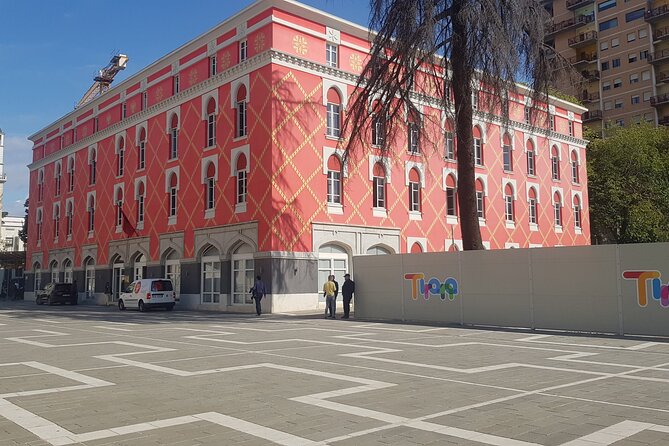
Enver Hoxha’s iron-fisted rule over Albania from 1944 to 1991 transformed the country into a staunchly communist, totalitarian state, with the leader’s cult of personality permeating every aspect of life.
Hoxha’s regime ruthlessly cracked down on any perceived dissent, with thousands of Albanians imprisoned or executed for political crimes.
The state’s omnipresent surveillance and control extended to the economy, education, and cultural affairs, as Hoxha sought to mold the country in his own rigid, Marxist-Leninist vision.
Despite Albania’s isolation from the rest of the world, Hoxha’s reign left an indelible mark on Tirana and the nation, with remnants of his totalitarian legacy still visible today.
Key Sites in Tirana
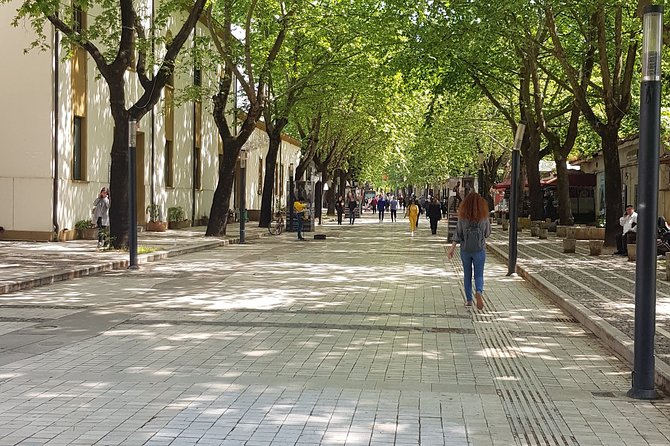
Among the most iconic sites dotting Tirana’s landscape are the towering Skanderbeg Square and the Pyramid of Tirana, relics of the city’s communist era that continue to captivate visitors today.
The sprawling Skanderbeg Square, named after Albania’s national hero, features the grand National History Museum and the Skanderbeg statue, a powerful symbol of Albanian nationalism.
The nearby Pyramid of Tirana, once the mausoleum of Enver Hoxha, now houses the Bunkart 2 museum, offering a glimpse into Albania’s communist past.
These sites stand as reminders of Tirana’s complex history, inviting travelers to explore the city’s transformation from a communist stronghold to a vibrant, forward-looking capital.
Exploring Skanderbeg Square
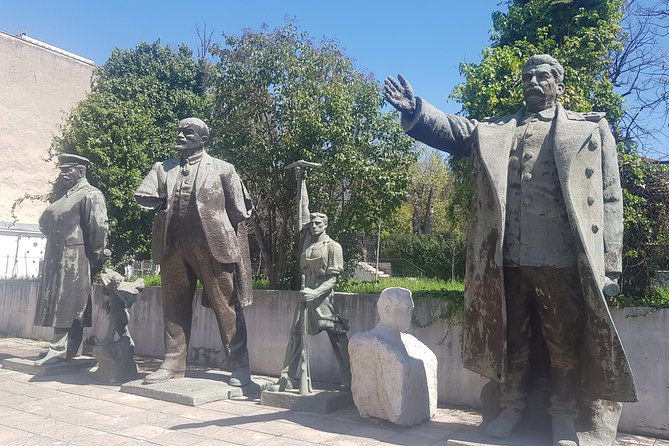
At the heart of Tirana’s historic center stands the expansive Skanderbeg Square, a testament to the city’s enduring national pride and the resilience of its people.
Named after the Albanian national hero George Kastrioti Skanderbeg, this bustling public plaza has long been the epicenter of Tirana’s political and social life.
Visitors can explore the towering statue of Skanderbeg that dominates the square, as well as the grand neoclassical buildings that line its perimeter, including the elegant Et’hem Bey Mosque and the National History Museum.
Today, Skanderbeg Square serves as a vibrant gathering place, hosting festivals, concerts, and other events that celebrate Albania’s rich cultural heritage. It’s a must-see destination for anyone seeking to understand the spirit and history of Tirana.
The Pyramid of Tirana
Once visitors have explored the historic Skanderbeg Square, their attention often turns to the distinctive Pyramid of Tirana, a striking landmark that dominates the city’s skyline.
This unique structure was originally built as a museum dedicated to former dictator Enver Hoxha, but it has since taken on a new life in the post-communist era.
Today, the Pyramid of Tirana is a popular attraction that offers stunning views over the city from its rooftop observation deck. Visitors can also explore the building’s interior, which houses art exhibits and cultural events.
With its bold architectural design and complex history, the Pyramid of Tirana remains an intriguing and thought-provoking part of Tirana’s communist legacy.
Bunkart 2 Museum
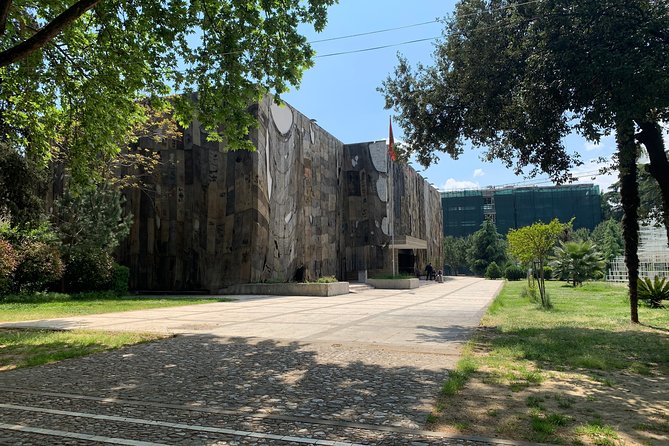
Visiting the Bunkart 2 Museum immerses travelers in Albania’s communist past, as this underground bunker-turned-museum offers a glimpse into the country’s tumultuous history under the regime of Enver Hoxha.
The museum’s exhibits showcase:
- Hoxha’s secret nuclear bunker, built to withstand a nuclear attack
- Rooms dedicated to the surveillance and repression tactics used by the communist government
- Artifacts and interactive displays that bring the period to life and highlight the impact on everyday Albanians
Through these powerful displays, visitors gain a deeper understanding of Albania’s transition from a closed-off, authoritarian state to a democratic society striving to forge a new identity in the post-communist era.
Experiencing Communist-Era Life
Beyond the Bunkart 2 Museum‘s stark reminders of the communist regime, the walking tour immerses visitors in the everyday realities of life under Enver Hoxha’s authoritarian rule.
Tourists learn how citizens were monitored and controlled, with the government dictating everything from career paths to social activities. They’ll see the modest apartments where families lived, often with multiple generations under one roof.
The guide shares personal stories of the shortages and restrictions people faced, from queuing for hours to buy basic necessities to the fear of speaking out against the regime.
Lunch and Reflection
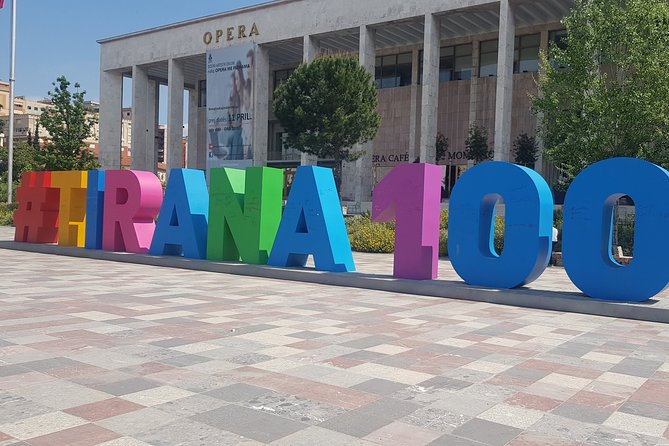
After exploring the harsh realities of life under communism, the tour’s participants gather for a lunch that allows them to reflect on the profound insights gained.
Over a meal of traditional Albanian cuisine, they discuss the resilience and adaptability demonstrated by the country’s citizens in the face of such oppressive conditions. The guide encourages open dialogue, fostering a deeper appreciation for the complexities of Tirana’s tumultuous past.
The conversation covers a range of topics:
- The impact of Enver Hoxha’s regime on daily life
- The significance of the Pyramid of Tirana and its shifting purpose
- The gradual transformation of Tirana from a communist city to a vibrant, modern capital
This reflective lunch provides a poignant conclusion to the tour, leaving participants with a more nuanced understanding of Albania’s past and its continued journey of progress.
Frequently Asked Questions
How Physically Demanding Is the Walking Tour?
The walking tour is moderately physically demanding, covering approximately 2 miles over 2 hours. It’s suitable for most travelers, though those with mobility issues may find it challenging. The tour includes stops and opportunities to rest along the way.
Are There Opportunities to Use the Restroom During the Tour?
The tour includes several stops, and the guide ensures there are opportunities for restroom breaks along the way. Participants can use restrooms at cafes and museums visited during the 2-hour walking tour.
Can the Tour Be Customized for Dietary Requirements?
Yes, the tour can be customized to accommodate dietary requirements. Travelers should notify the tour operator in advance, and the guide will make the necessary arrangements to ensure a comfortable and enjoyable experience for all participants.
Is the Tour Suitable for Young Children?
The tour may not be suitable for young children as it focuses on Tirana’s communist history, which could be complex or overwhelming for them. However, the tour is wheelchair and stroller accessible, making it potentially accessible for families with young children.
Is There an Option to Extend the Tour Duration?
The tour duration can be extended for an additional fee. Travelers can discuss extending the tour with the guide to explore more of Tirana’s communist history and sites beyond the standard 2-hour itinerary.
Recap
Tirana’s transformation from a communist capital to a vibrant, forward-looking city reflects the resilience of its people.
Iconic sites like Skanderbeg Square and the Pyramid of Tirana stand as reminders of the past, while museums like Bunkart 2 offer insight into the communist era.
As visitors explore Tirana’s complex history, they gain a deeper understanding of the city’s evolution and the adaptability of its residents in the post-communist age.
More Tour Reviews in Tirana
- Explore Berat(Unesco) and Apollonia From Tirana/Durres
- Virtual Reality Games and Experiences – Perfect Place to Drink and Have Fun!
- Berat, Durres, Elbasan in One Day – Religious Harmony in Albania
- Berat Historical & Cultural Full Day Tour From Tirana & Durres
- Christmas Fairy Tale in Tirana – Walking Tour
- TOMOR MOUNTAIN HIKING From Berat by 1001 Albanian Adventures
Not for you? Here's more things to do in Tirana we have recnetly reviewed
- 4 Best Canoe And Kayak Experiences In Tirana
- 3 Best Dining Experiences In Tirana
- 13 Best 2 Day Tours In Tirana
- 2 Best Dinner Tours In Tirana
- 13 Best 3 Day Tours In Tirana
- 10 Best 4 Day Tours In Tirana
- 6 Best Canoe And Kayak Experiences In Tirana
- 12 Best Food Tours In Tirana
- 20 Best Full-Day Tours In Tirana
- 7 Best Lunch Experiences In Tirana
- Dajti Mountain & Shengjergj Waterfall Day Trip on Land Rover
- The Communist Daytrip Around Tirana
